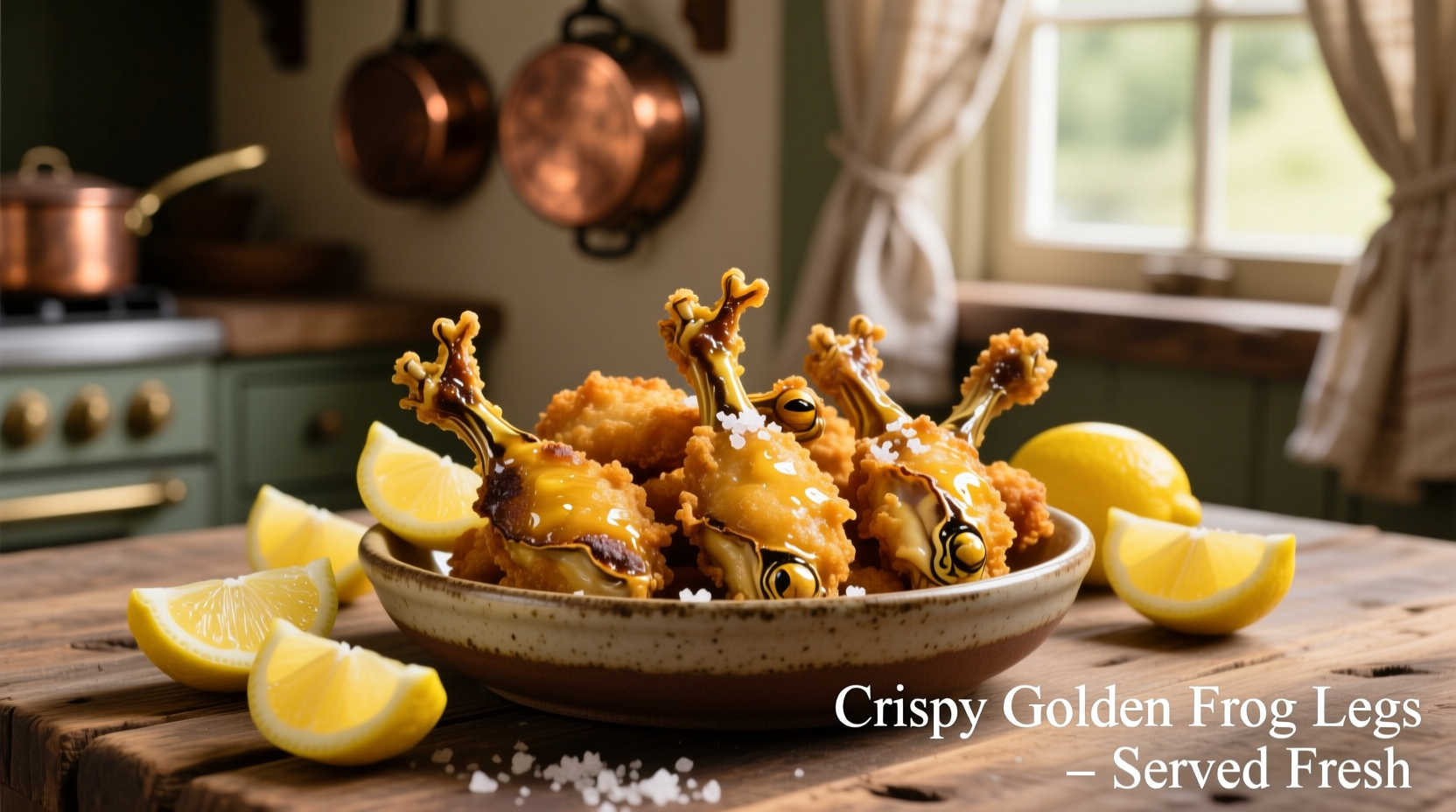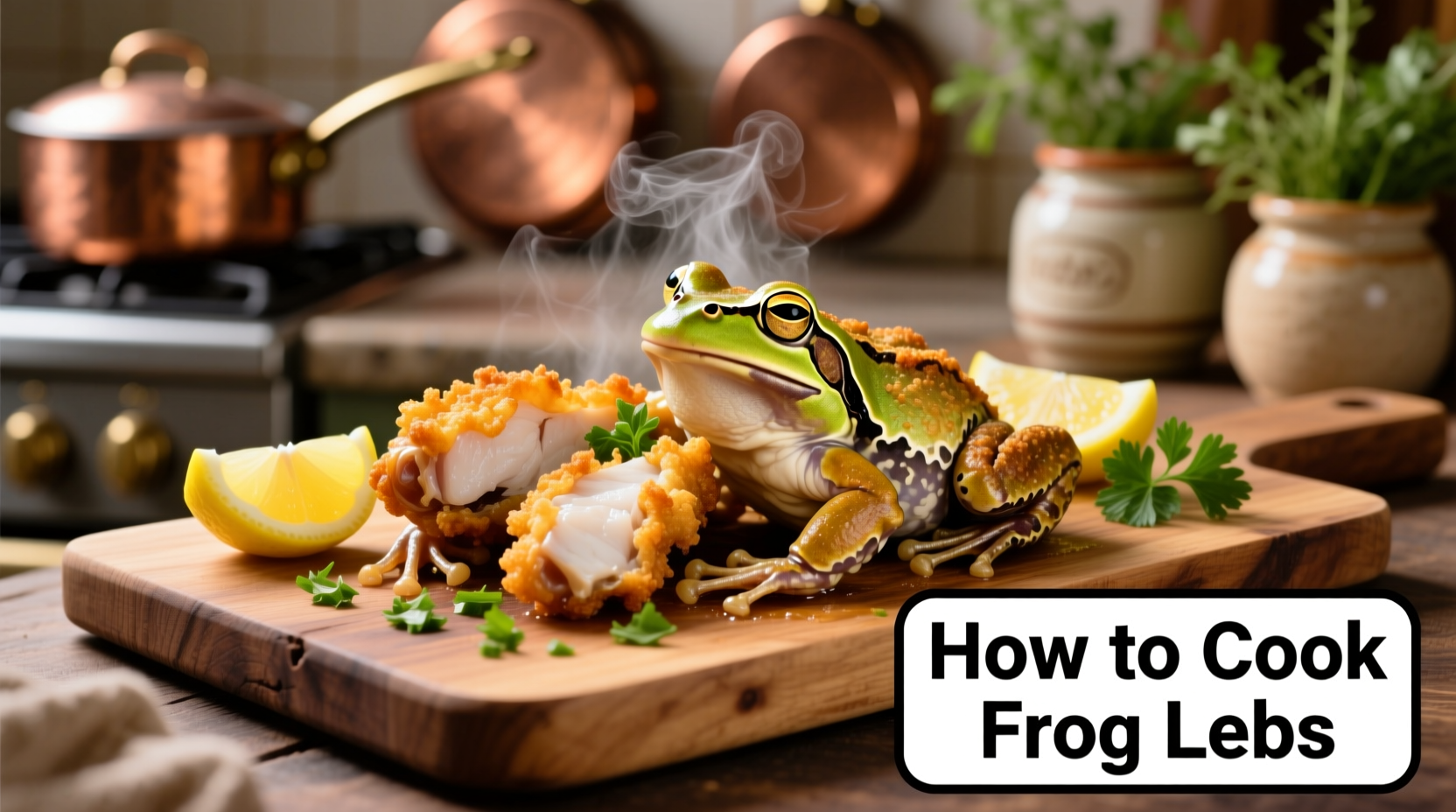Your Complete Guide to Perfectly Cooked Frog Legs
Have you ever wondered why professional chefs consistently achieve that perfect balance of crispy exterior and tender interior with frog legs? The secret lies not just in technique but in understanding this unique protein's delicate nature. In this guide, you'll master every step from selection to plating, transforming what might seem intimidating into a restaurant-quality dish you can prepare with confidence in under 30 minutes.
Understanding Frog Legs: More Than Just a Novelty
Frog legs have been part of human cuisine for thousands of years, with evidence of consumption dating back to 12,000 BC in England. Today, they're enjoyed globally - from French cuisses de grenouille to Chinese stir-fries and Southern US cooking traditions. The rear legs contain the edible meat, which is lean, white, and remarkably similar to chicken in both texture and mild flavor profile.
| Culinary Tradition | Preparation Method | Key Flavor Profile |
|---|---|---|
| French | Pan-fried with garlic butter | Rich, herbaceous, delicate |
| Chinese | Stir-fried with black bean sauce | Savory, umami-forward |
| Southern US | Deep-fried with Cajun seasoning | Spicy, crispy, robust |
This culinary timeline shows how frog legs have evolved from survival food to gourmet delicacy. According to archaeological findings from the University of Cambridge, frog consumption predates many common livestock animals in European diets (University of Cambridge Archaeology Department).
Where to Source Quality Frog Legs
Your cooking success begins with proper selection. Look for:
- Freshness indicators: Pale pink to ivory color, firm texture, and clean ocean-like aroma (never fishy)
- Source verification: USDA-inspected suppliers or reputable seafood markets
- Preparation status: Most commercially available frog legs come pre-cleaned and frozen
When purchasing frozen frog legs, check for ice crystals which indicate potential freezer burn. Properly stored at 0°F (-18°C), they maintain quality for 6-8 months. Thaw overnight in the refrigerator before cooking for best results - never use warm water as this damages the delicate texture.

Essential Equipment for Perfect Frog Legs
Unlike chicken or fish, frog legs require specific attention to cooking equipment:
- Cast iron or carbon steel skillet: Provides even heat distribution crucial for proper browning
- Candy thermometer: Essential for monitoring oil temperature (375°F/190°C is ideal)
- Thin metal spatula: Allows gentle handling of delicate meat
- Wire cooling rack: Prevents sogginess after cooking
USDA food safety guidelines emphasize maintaining proper cooking temperatures to prevent foodborne illness. Frog legs should reach an internal temperature of 145°F (63°C) as measured by an instant-read thermometer (USDA Food Safety and Inspection Service).
Three Foolproof Cooking Methods
Classic Pan-Fried Frog Legs (French Style)
- Pat frog legs completely dry with paper towels
- Season lightly with salt and freshly ground black pepper
- Heat 2 tablespoons clarified butter and 1 tablespoon olive oil in skillet over medium-high heat
- Cook for 3-4 minutes per side until golden brown
- Add 2 crushed garlic cloves and fresh herbs during last minute of cooking
- Baste with hot butter mixture for added flavor
Crispy Deep-Fried Frog Legs (Southern Style)
- Prepare buttermilk marinade with hot sauce (2 hours minimum)
- Create seasoned flour mixture with paprika, cayenne, and garlic powder
- Heat peanut oil to 375°F (190°C) in deep fryer
- Dredge legs first in flour, then buttermilk, then flour again
- Fry for 2-3 minutes until golden and cooked through
- Drain on wire rack to maintain crispiness
Quick Stir-Fried Frog Legs (Asian Style)
- Marinate in rice wine, ginger, and soy sauce for 30 minutes
- Heat wok until smoking hot, add neutral oil
- Stir-fry frog legs for 2 minutes until lightly browned
- Add black bean sauce and fresh vegetables
- Cook 1-2 minutes more until sauce coats legs
- Serve immediately with steamed rice
Avoiding Common Frog Leg Mistakes
Even experienced cooks make these critical errors:
- Overcooking: Frog legs become tough after just 30 seconds past ideal doneness
- Insufficient drying: Moisture prevents proper browning and causes oil splatter
- Wrong oil temperature: Below 350°F creates greasy results; above 400°F burns exterior before interior cooks
- Overcrowding the pan: Lowers oil temperature and creates steamed rather than fried texture
Frog legs contain less than 1 gram of fat per serving, making them one of the leanest protein options available. However, their delicate structure requires precise cooking - unlike chicken, they don't have connective tissue to forgive timing errors (USDA FoodData Central).
Serving Suggestions That Elevate Your Dish
Pair your perfectly cooked frog legs with these complementary elements:
- Sauces: Lemon butter, remoulade, or light garlic aioli
- Sides: Crisp green salad, roasted new potatoes, or sautéed seasonal vegetables
- Beverages: Crisp white wine like Sancerre or a light lager
When plating, arrange frog legs to showcase their elegant shape. Professional chefs often serve them standing upright rather than flat to highlight their unique appearance. For a traditional French presentation, serve on a warm plate with lemon wedges and fresh parsley garnish.
Safety Considerations and Ethical Sourcing
While frog legs are safe to eat when properly prepared, consider these important factors:
- Only consume frog legs from reputable commercial sources - wild-caught poses significant food safety risks
- Avoid species listed as endangered or protected in your region
- Proper cooking eliminates potential parasites, but sourcing from inspected suppliers is critical
- Some regions have specific regulations regarding frog harvesting - check local guidelines
The Food and Agriculture Organization of the United Nations notes that sustainable frog farming practices have developed significantly in recent years, reducing pressure on wild populations (FAO Fisheries and Aquaculture Department).











 浙公网安备
33010002000092号
浙公网安备
33010002000092号 浙B2-20120091-4
浙B2-20120091-4